Space Piracy - Deceitful Delta-V and Hydrogen Stealth Steamboats - Part 1
Space piracy, quite a popular topic in science fiction. The image of space pirates is constantly used in the science fiction genre, as some kind of tracing paper from the pirates of the seas and oceans.
However, let's see if it is possible to piracy in space?

Chinese junk
')
Piracy is a certain type of theft, when the goods, the crew or the ship itself can be stolen, captured by pirates demanding ransom, either without it on the way or during the transition between the points of departure and destination.
Piracy operates in accordance with the rules that make the theft expedient:
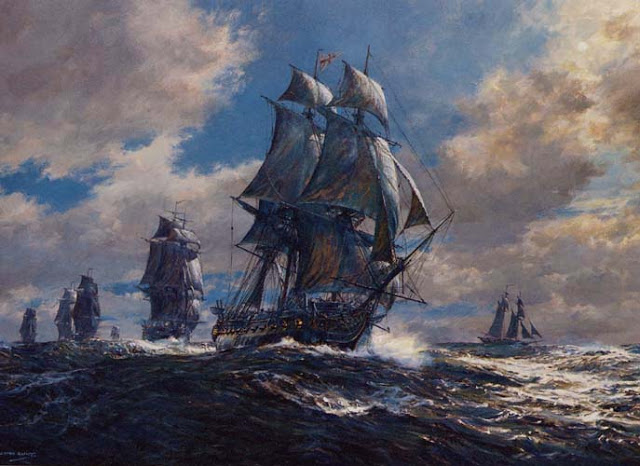
Pretty simple rules, isn't it?
Pirates want to get something as a result of their attack, something worth their time and the risk to which they expose themselves. And if the reward is not in cash, then the pirates should be able to convert their loot into money. After that, they will want to spend the money and enjoy the fruits of their adventures, without fear of constant pursuit.
One of the best examples of modern piracy and how critical these rules are for piracy is the situation off the coast of Somalia from 1986 to 2013.

In 1986, after the fall of the brutal regime of Siad Barre, a destructive civil war began. State institutions ceased to function, insurgents and gangs organized themselves into armed groups, and the Somali fleet was disbanded.
The fishermen felt the consequences of the illegal dumping of wastes and the pollution of their fishing waters and saw that their livelihoods were at risk of extinction.
In the aggregate, the current situation allowed numerous groups, armed with AK-47 and RPGs, to form a fleet of small boats and fishing trawlers and to operate freely in the open sea and the same waters through which there is a constant, rich stream of ships loaded with cargo containers entering or leaving from the Indian Ocean through the Suez Canal.
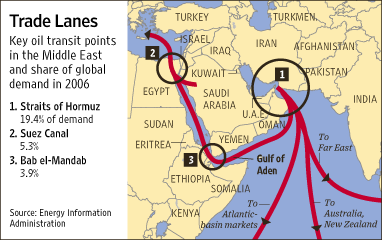
The pirates acted with impunity, both at sea and on land. Shipping companies paid a ransom for their crews, and even the tiniest booty their boats could carry was sold by unscrupulous traders. The money received was then shared between a team of pirates, patrons, bribes to officials, the purchase of fuel and the purchase of new boats, as well as with fishermen and their families. Often, Somali pirates were considered benefactors of fishing villages.
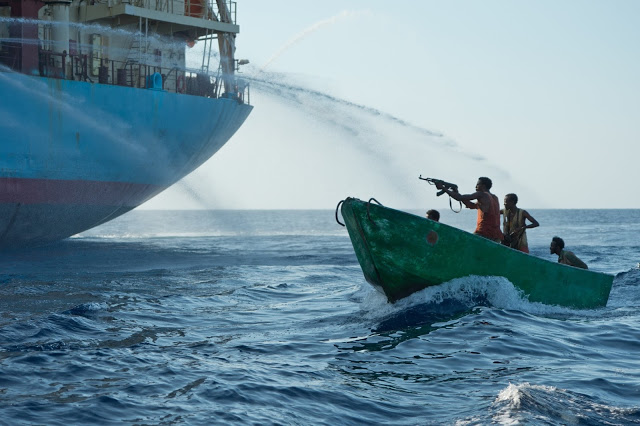
Such groups attacked the cargo ships.
Pirates earned millions at minimal cost and without real risk. Their remuneration went directly to bank accounts or in cash received from the sale of jewelry, mobile phones and other valuable items taken out of the cargo containers during the attack: all this can be easily sold. Finally, the real police did not operate in this territory or the authorities did not function, so the laws on pirates did not act. Therefore, all the conditions for the emergence of piracy were met.
The number of attacks rose to thousands per year, pirates demanded millions of ransoms for only one ship. Therefore, the navy was given permission to cross the borders of the territorial waters of Somalia to harass pirates. Now, US warships patrolled the area, along with warships from more than 20 countries, including Japan and New Zealand. Cargo ships were now equipped with water cannons, safe rooms, and the team had armed guards. Anti-piracy groups conducted raids on shelters on land, confiscated weapons. Maritime police forces were formed.
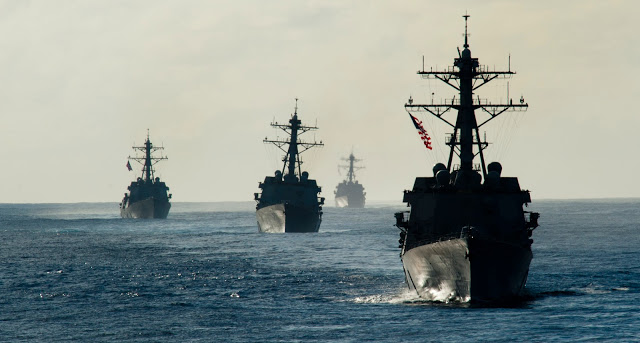
US Navy ships patrol the waters in search of pirates
Thus, the risks have increased significantly. Now unsuccessful attacks could lead to the fact that the pirates would be shot by US Marines or detained and sent to foreign countries. Such prospects frightened many, while others forced the rest to go farther and farther into the sea in search of unprotected mining, therefore the costs also increased. Shipping companies have now become less inclined to pay millions in ransoms for their crews, and instead they called on warships to cope with the situation. Trained teams from the states of the region could now even chase runaway pirates, chase the pirates by helicopter or intercept after returning to shore.
There were no more conditions for piracy. Therefore, since 2012, there has not been a single case of a successful attack on cargo ships in the Horn of Africa.

End of an era
With these requirements in mind, numerous examples can be analyzed throughout history to understand why piracy was common and why it fell into disrepair. The most famous examples, such as the Pirates of the Caribbean, the Berber Pirates, and the Pirates of Madam Qing, were the result of the circumstances that met such requirements.
Pirates attacked horse-drawn carriages, trucks, trains, ships and airplanes, but all this happened on Earth. Cosmos, on the other hand, represents a completely different environment and creates completely new problems for the implementation of piracy.
Suppose we consider piracy within our solar system, where most of the solids are inhabited by permanent populations of various sizes that trade in significant amounts of goods at interplanetary distances.
Travel between the planets is cheap enough for mass transportation of goods to be profitable (large quantities of raw materials), but at the same time, the cost of fuel is not negligible and is considered an important variable in the profitability of shipping companies.
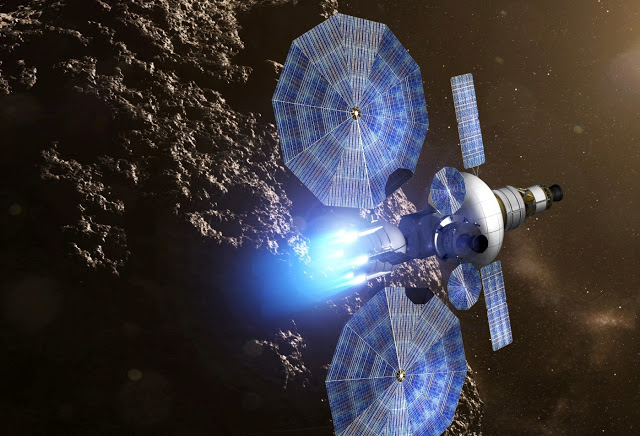
Because of the danger of a catastrophe, which will inevitably lead to a collision at interplanetary speeds with the spacecraft, or with the space station, or with their fragments, the ubiquitous monitoring and tracking of all objects more than a centimeter in size is organized throughout the solar system. It is understood that all spacecraft are weapons of mass destruction throughout the entire period of their operation and are treated as such.
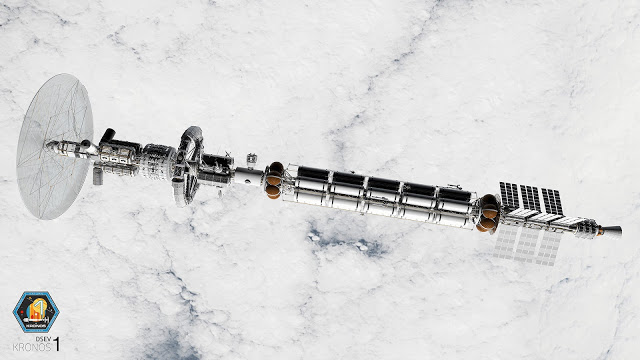
CS Kronos 1
Let's take a look at how changing these assumptions will affect piracy in space, but for the time being we will be working with realistic data from the “near future.”
The search for a victim is a non-trivial task and it often depends on it whether the act of piracy will occur in principle.
Pirates are parasites in any economy, and therefore profitable piracy requires an active and developed economy. And this means that for every pirate operation there are hundreds, thousands and more of legitimate merchants and enterprises that transport their cargoes by ships within the solar system.
Due to the significant time lag between the order of the goods and their arrival at the destination, measured in weeks, months and years, you can make a profit on the arrival of the cargo only by correctly predicting the market conditions for weeks, months and years ahead: the timing of such deliveries is crucial. This is exacerbated by the fact that the cheapest transportation includes infrequent deliveries of huge quantities of goods at once, with a significant “dumping” effect on destination markets.
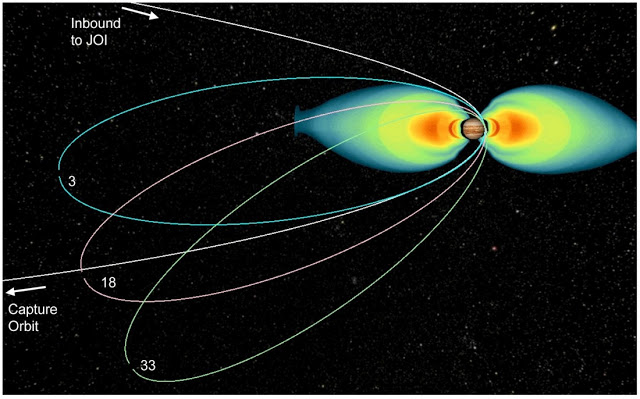
The dangers inherent in space flight require that each spacecraft announce its flight plan and time of departure / arrival in advance. This will prevent dangerous collisions between spacecraft, which in turn can lead to the formation of a huge amount of debris that will delay popular orbits and clog the trajectories of flight trading routes between the planets.
Since merchants cannot hide their time and deadlines, they will insist on the confidentiality of the nature and quantity of the goods being shipped. A competitor who possesses such information can damage the company, drastically reduce prices or place purchase orders in a timely manner, thus simply stealing the profits of the shipping company.
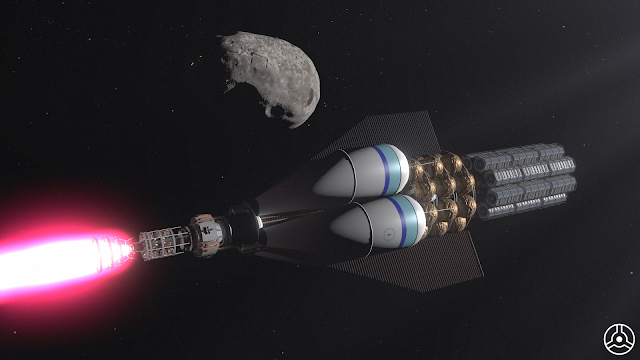
SMPritchard
Transportation of iron or platinum by a transport ship would look absolutely identical outwardly and it would be impossible to determine from specific distances, for example, with the help of a telescope, which particular goods are transported.
So, the pirates will have to collect this information from three sources: reports on inspections of the transport department, conduct espionage operations or track internal communications between agents of the shipping company.
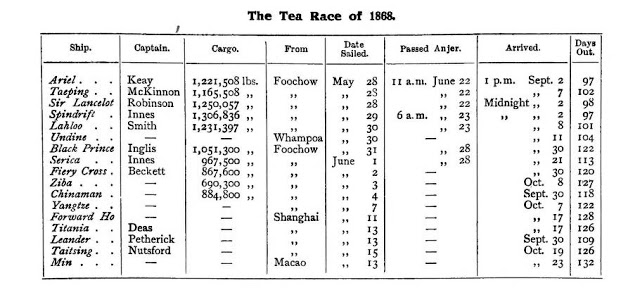
Piracy in space is impossible without such detailed information. In terms of time, effort, fuel consumption and simple risk, it is too expensive to track potential targets blindly.
Therefore, pirates will have to sweat and do some additional work, including hacking systems, bribing, penetration, and using other methods of collecting information that are effective and at the same time imperceptible.
The next task is to actually get to the target when it is in flight and outside the safe harbor of the spaceport or space station from which it left.
The main problem is the omnipresent tracking of spacecraft.
If every ship is tracked, then any pirate attack will be detected by everyone immediately. Any spacecraft deviating from the planned trajectory will be flagged as a potential threat to everyone around it and to anyone in its path. This is similar to how aircraft are tracked today on routes over North America or Western Europe and other regions.
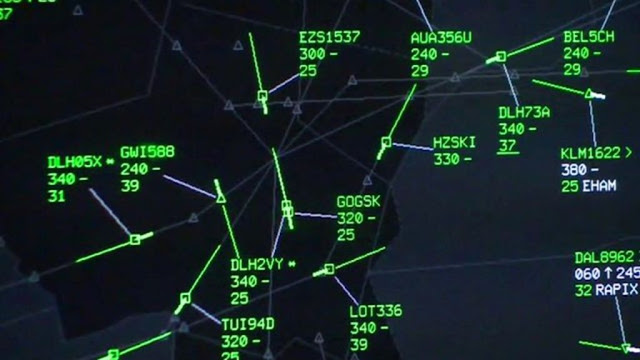
If the pirates commit an attack, the authorities will know about it immediately and they will carefully monitor such a ship, wherever it goes. After that, a military spacecraft may be sent for the pirates or the police will meet them upon arrival at the space station or in another port.
Any increase or decrease in speed or change of the trajectory in space requires a certain fuel consumption. Going out on the flight path of the target usually involves acceleration to the target, and then braking until the relative speed reaches zero, therefore, in most cases, pirate spacecraft must have a higher delta V margin than the target.
Given this amount of maneuvers, the victim ship will be able to spot the spacecraft that has begun to accelerate in its direction for millions of kilometers, which means that, in turn, it can begin to accelerate to avoid an unwanted meeting.
For each meter / second acceleration of the target, pirates will need 1 m / s for acceleration and another 1 m / s for braking to attack. This means that pirates will need more than twice the delta-V than any target they are attempting to seize.
For example, if a target that moves at a speed of 20 km / s. has a delta-V reserve of 25 km / s for braking at the destination and maneuvering, is equipped with a rocket engine with an outflow speed of 30 km / s (Isp 3058s), then its mass ratio at the start of the journey should have been 4.48, and now it is 2.3 For each kilogram of dry mass, the target spacecraft will carry from 3.48 to 1.3 kg of fuel.

Expendable fuel tanks will allow to achieve a high mass ratio
A pirate spacecraft that tries to catch such a target spacecraft must first accelerate to a speed of 20 km / s, from which the target moves, use up a reserve in the delta V 25 km / s, and then slow down from 45 km / s to a full stop . If we assume that its propulsion system is similar to the engines of the target ship, then the mass ratio of the pirate ship should be about 20. This means that for every kilogram of dry weight it should carry 19 kg of fuel: that is, such a ship will consist of more than 95% fuel tanks!
The missile flight formula works in such a way that doubling a spacecraft's delta V will require a quadratic increase in the mass ratio.
Of course, it is possible to organize a “random interception” and capture the target without the need to fly on the bundles of fuel tanks, but this can only work once and for a very short period of time.
The solution to this critical problem for space pirates exists: and that is stealth technology.
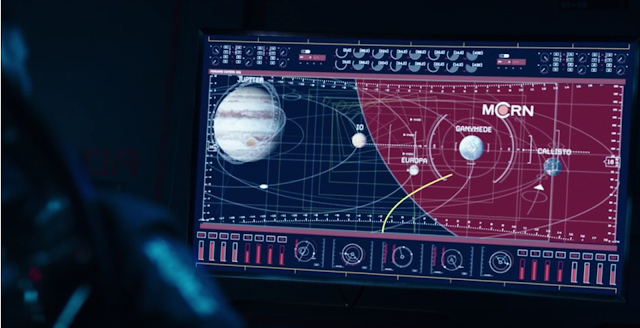
Screenshot from The Expanse
If the watchful eye of the police and military sensors cannot detect the pirate ship, then it can do anything. May approach its target without warning, attack it in complete secrecy and return to the operational base without the risk of being detected and without the risk of persecution.
Stealth in space - the point is that a ship in space can be detected if it reflects sunlight, has a thermal signature, or its hull reflects radio waves. Sensors that are available even today can track even the weakest amount of reflected light, the lowest temperatures, and radar can detect radio waves at extremely large distances. Thus, in order to avoid detection, a spacecraft must have an absolutely anti-reflective surface, have an undetectable thermal signature, and not reflect radio waves.

Vantablack
All of these requirements, in turn, can be met by using Vantablack anti-reflective coating, heat pump systems and liquid hydrogen radiators that cool the body from the outside to the temperature of the cosmic background and the insulating shell around any metal component.
A pirate spacecraft, the design of which includes all these elements, can achieve “complete” invisibility: it will be impossible to detect it physically, except if such a ship is not literally under the nose of the target.

The ship uses a mass accelerator to move.
Maneuvering in "cold mode" can be carried out using any kind of engine that displaces low-temperature gas. One such example would be cold gas engines, another might be an electromagnetic mass accelerator. Curved nozzles with extreme expansion coefficients on a conventional “hot” engine can also be used to expand exhaust gases to temperatures that cannot be monitored.
Stealth mode has another advantage: if the target does not know that they are going to attack it, then it will not know that it is necessary to flee until it is too late and will not be able to use its reserve delta-V, and therefore the requirements for delta -V pirate ship will be ordinary as for a normal transport ship.
The design of such a stealth spacecraft / stealth, let's call it "Hydrogen Steamer" - due to the use of boiling liquid hydrogen - has its drawbacks. Such a ship would require a very large amount of liquid hydrogen, which is not distinguished by high density. That will lead to the fact that even the most short-lived “Hydrogen Steamer” will be very massive. For example, to process 10 kW of waste heat at room temperature, evaporation of 2.3 g / second of liquid hydrogen is required. If the spacecraft must be in stealth mode for six months, then it will need a supply of hydrogen of 36 tons, which has a volume of 517 m ^ 3. And this is a cylinder 3 m wide and 73 m long!
Coating such a large structure with carbon nanotubes can also be very expensive, depending on the level of production technology that pirates have access to. Cryogenic kilowatt heat pumps that can operate at temperatures of 20 Kelvin and below may also be unavailable. And how to prevent the leakage of hydrogen, which is known to be very volatile, for a long time is also not an easy task.
In addition, low-temperature exhaust imposes significant restrictions on the propulsive characteristics of the ship. Hidden movement on the trajectory of interception of the target spacecraft, will require the consumption of huge amounts of liquid hydrogen, to compensate for the increase in waste heat due to the use of power plants, which will generate this heat even more.
The price of stealth, of course, depends on what kind of loot the pirates expect to receive as a result of their attack.
If pirates are under constant surveillance and should avoid meeting with the armed forces of all powers, then they will need complete secrecy from the beginning of the operation to its end. So in this case, you will need a special ship of the type "Hydrogen steamer".
If the pirates operate in places where supervision is less strict, the activity of the armed forces is not great, and the traffic control services do not ask many questions about the suspicious features of the pirate ship, then they can use stealth intermittently. Transition to orbit, which will lead them to an area that is near their target, can be performed in full view of everyone using the normal motion mode. And liquid hydrogen itself can only be used to hide its actions, already in the zone of direct interception of the target and attack, after which the pirates return to the usual movement mode, as if nothing had happened.
Depending on how long the pirates have to maintain stealth mode, the spacecraft they need can carry only a small amount of liquid hydrogen — small enough to look like regular fuel tanks. A pirate ship will be able to impersonate a regular merchant ship or transport and easily cross the danger zone.
So, the pirate ship intercepted its victim. During the interception, he may still be at a distance of hundreds or thousands of kilometers from his target, and the victim of pirates may be completely unaware of the situation.
When interception becomes an attack by pirates?
In fact, it depends a lot on how the pirates plan to get their money.
The easiest way to make money is to demand a ransom for the crew.

The overwhelming majority of private companies — if they want to preserve their reputation — will feel obligated to ensure the safe return of their employees — those who do not do this will quickly leave the business. The ransom of the crew in space does not require boarding: all that is required of the pirates is to have enough money to put at risk the life of the crew. It can be a simple threat to make several holes in the casing or to light a laser on the radiators. Pirates can be located a few hundred kilometers from the target and demonstrate their ability to cause damage. Then they establish a channel of communication with the transport company and begin to negotiate.
Having a crew on a ship usually means that the goods being transported need human attention or supervision: often they are high-value goods, confidential data, etc.
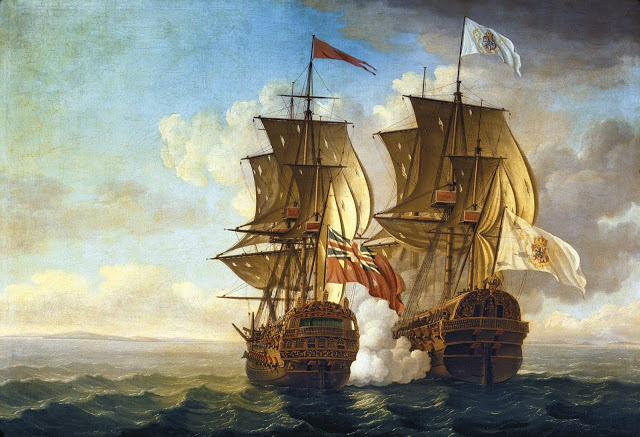
Spanish merchants returning from South America, loaded with gold, were the main targets
Pirates may be aware of what is on the ships and demand to transfer the cargo to them: that is, in addition to the ransom, they will also commit theft (or take hostages).
With theft in space, things are somewhat more complicated. Pirates must physically interact with their victims and to some extent they will need the cooperation of the crew of the captured ship. Depending on how much the pirates threaten their victims, the pirates can convince the crew that the transfer of precious cargo is less dangerous than resistance.

Drop the container or we will shoot!
If the crew’s cooperation cannot be guaranteed by radio, then the pirates can raise the stakes and damage the target or even attempt to disembark the ship.
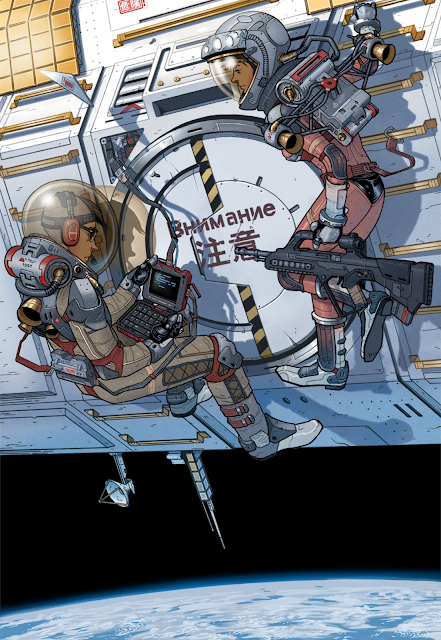
Breaking the gateway by ThDark
A distinction needs to be made between “disembarking”, which requires docking of ships and which can be infinitely difficult to use with shunting engines, and “Boarding”, when, as a result of a destructive impact, another entry point is created in the target hull, which can lead to significant risk the life of the crew and can cause them the desire to fight for their lives and non-penetrating "Abordaj", which includes fixing on the outer surface of the spacecraft and interact with it outside. The latter method is the safest for both parties; it is of most interest if, for example, the target spacecraft has a leaky cargo compartment, which can be accessed and stolen without affecting the accommodation.
Another valuable booty of pirates can be passengers who are aboard a spacecraft.

Passengers can be taken hostage and demand ransom from their families or employers. Negotiations on the redemption can take place through different channels and not only between the crew of the spacecraft and the shipping company. And it is in the interests of pirates to keep their hostages safe and sound - after all, only in this form do they have value during negotiations.

Luxurious space “yachts” carrying VIPs must be especially careful.
Pirates can also transfer hostages aboard their own ship in order to be able to escape in stealth mode before the authorities arrive, without the need to leave their prey.
Pirates may try to demand a ransom for the ship itself, or steal it and sell it on their own, in whole or in part. In some cases, if pirates intercept an unmanned vehicle that does not carry valuables or passengers, this may be the only way to make money. Although it is unlikely that the spacecraft can be completely disassembled (except when it is a modular ship), some valuable components and parts of the ship can be dismantled and sold on the black market: rocket engines, nuclear fuel or navigation computers, for example.
Finally, if pirates can intercept and even capture a ship and take control of a space ship. That is to steal the ship.
Hijacking a spacecraft will allow pirates to get their money, even if their target is a drone and there are no values or passengers on it, and it consists only of parts that you don’t earn much from reselling.
With a hijacked spacecraft, pirates can do three things: change the route, disable it, or turn it into a weapon.
Changing the flight path of a spacecraft by sending it to the wrong destination ensures that the ship arrives at a different place from its original destination (for example, a port in which corrupt movers will drag off all its cargo), or for example, that the flight of the ship will take much longer. Delay in delivery can adversely affect price fluctuations in the market, which financially experienced pirates can take advantage of: this way you can reduce the value of companies' shares, cause payment of fines for non-delivery time, increase the cost of goods due to artificial shortages, or manipulate market options and pirates .
Disabling a spacecraft will force the transport company to spend money (and a huge amount of fuel) on its restoration before it leaves the trajectory of the route or even leaves the solar system. This may make sense if the pirates cooperate with corrupt companies that are engaged in repair and maintenance, or as part of a ploy to increase the cost of the ransom.
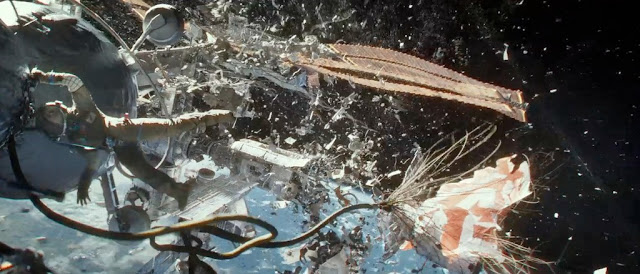
As mentioned above, any spacecraft moving at interplanetary speed is a weapon of mass destruction. A hijacked spacecraft can be targeted at a space station or colony, which can lead to huge losses, human and material losses, and pirates may demand that they pay a huge amount of money proportional to the return value of the spacecraft to its original trajectory. Therefore, large settlements may have to pay more. Of course, most likely, they will have some kind of protection in order to shoot down stray asteroids and pirate spaceships, but they can do little against an unmanned transport ship weighing thousands of tons with a load of ore or ice,especially if pirates act covertly until the very last moment.
Naturally, the Pirates need their own base.
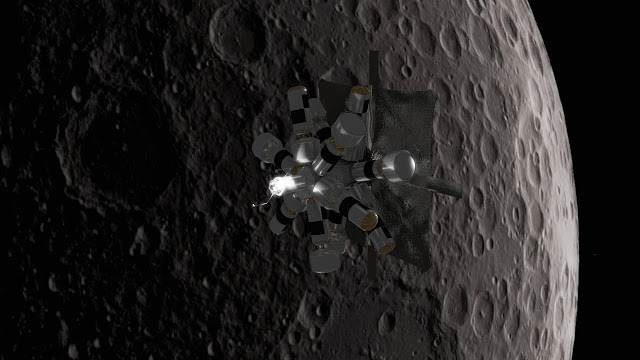
Near-moon gas station
It is on such bases that pirates serve their vessels, unload their loot and plan their attacks. This means that such a base can provide them with fuel, spare parts and repairs, provide information collection and exchange services, ensure safe storage and sale of stolen goods on the black market (or has its own market), and most importantly, provide protection from the authorities. Protection of pirates can be provided by stealth (the base cannot be detected), weapons (the base should not be attacked) or the granting of any immunity (the base is located in a region in which the authorities do not act).

Whether this will be some kind of pirate harbor under the protectorate of any of the competing powers or a hidden space station depends on technological assumptions.
If the pirates cannot repair their own spacecraft or get fuel on their own, then they will need a full-scale port providing these services. If instead they can print most of the ship's components that they need using a 3D printer and can replenish the fuel using their own methods of processing resources, then they will be much less tied to any one place.

Pirate base, arranged in the nucleus of the comet
In practice, most pirates will need access to all three types of bases. Even the most self-sufficient pirates will need to somehow sell the stolen goods, and even the most dependent pirates will be able to collect more fuel and spare parts, for example, by stealing them from the ships of their victims.
Thus, we conclude that the pirates must have their own ship, physically approach the target, carry out an attack, after which it will disappear in stealth mode. Not much different about the traditional sci-fi fantasy about "Space Pirates", which in fact is very similar to the romantic version of the Pirates of the Open Seas, but only in Cosmos.
Based on this assumption, we believe that pirates are a group of criminals who operate in outer space and violate the law using specialized spacecraft.
In fact, the range of actions that correspond to the true definition of “piracy” is much wider and implies any robbery or violence carried out in respect of any ship en route.
Therefore, it is also likely that there may be such pirates who, sitting in a comfortable chair, are trying to remotely hack the electronic defenses of the spacecraft of their victims. This kind of pirates is represented in the corsair - James L. Kambias. If attackers cannot break through the defense systems, then they can gain control of the ship using a remote-controlled drone to get to the target. Such an unmanned ship does not have to be big: it could be a micro-satellite equipped with a radio transmitter, captures and manipulators.
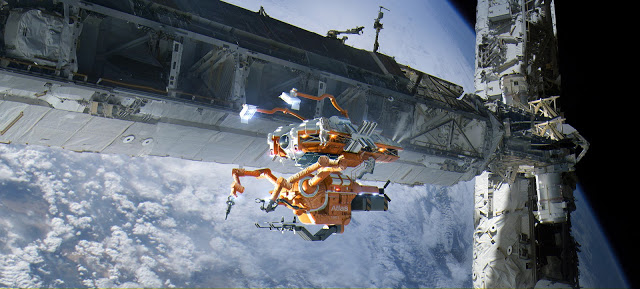
Manipulator Drones
A drone can use its manipulators to access any open electronics, sensors, or communication devices to bypass electronic protection and capture the target. Even if this is too difficult, the pirates can simply place the bomb on board the unmanned aerial vehicle and inform the crew that if they do not follow the instructions, it will be blown up.
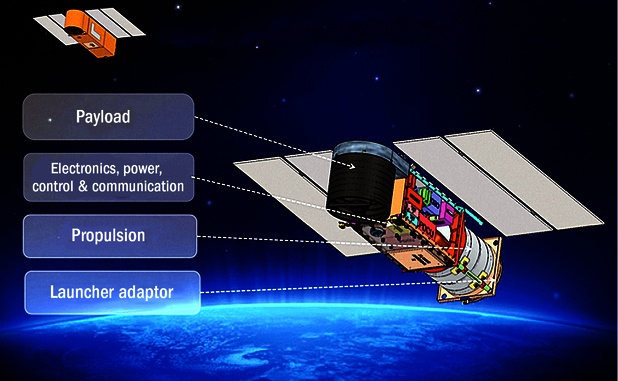
Such a micro satellite is much easier to hide using stealth mode than any large manned ship. He can walk around the docked ships still at the station and lock onto the target hull long before the ship leaves the station. Capturing a target in deep space is also greatly simplified, since a micro-satellite does not need a large engine or a huge amount of fuel.
Remotely or through such unmanned aerial vehicles, pirates can earn money using most of the same methods we mentioned earlier, but without risking ourselves. In fact, it is more realistic that ordinary criminals who control dozens and hundreds of such miniature unmanned aerial vehicles will turn out to be "pirates", which will increase their chances of intercepting rich booty.
And yes, the assumption that pirates must necessarily be criminal groups is not always true.
Pirates can be ordinary merchants who are engaged in raiding. And this is a legitimate method of warfare and “pirates” falling under this definition have been known as privateers throughout history. Privateers act like pirates, but only against the enemies of the nation that sponsors them.

Privateering solves most of the problems that pirates may encounter in space: they may have their own secure operational base, they do not need to hide in friendly territory and no one will hunt them until they get to their base. And the captured spaceships can be redirected to the ports of the country-sponsor, where they can be sold in whole or in parts.
However, the number of potential targets for raiders is more limited than for real pirates, and their sponsorship can be canceled if they do not follow the rules or if the conflict is over. There is also a risk that they will be actively hunted as a military target and they are unlikely to win the battle against real
warships.
There is also a type of pirate who is a criminal, but he has nothing to fear from the authorities: a corporate raider.

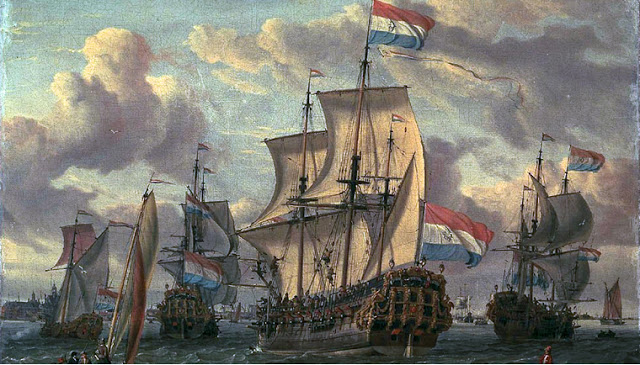
For example, the East India Company practically had its own armed forces, and the company’s rules were law.
Corporations in space will compete for control of markets at all levels. Such competition can escalate into illegal activities, such as attacks on competitors' space ships and raider attacks on their commercial enterprises, in order to destroy reputation or steal confidential information. In the vast expanses of space, and given the amounts of money that space corporations may have to pay bribes, many of these illegal actions may take place in the future.
In short, such corporations may unofficially hire ships and crews that will act like pirates and attack competitors' space ships. On the one hand, such teams will be protected from the consequences if they follow the established rules, but at the same time can be transferred to the authorities if they violate the terms of the contract.
The competitor, in turn, seeing the inaction of the police and the military, can take matters into their own hands, hire pirates or pirates hunters. The chances that the armed forces will intervene in the “red against red” conflict, even if it develops into a war between corporations, are small.

The main difference between corporate warfare and true piracy is that corporate pirates are unlikely to get money demanding a ransom from their victims, since it makes little sense for corporations and they are unlikely to be able to use spaceships as WMD to blackmail large settlements. this will attract the attention of the authorities, which cannot be bribed.
What's next:
So far we have considered the conditions necessary for the formation and prosperity of piracy. Pirates in space can be marauders and thugs scurrying back and forth in their invisible ships, cooled to cryogenic temperatures in search of prey, or inconspicuous criminals working from home using remotely controlled drones.
In the next part, we will discuss countermeasures that can be developed to combat piracy in space and consider what implications this will have for the future arrangement of the world.
However, let's see if it is possible to piracy in space?
So what is piracy?

Chinese junk
')
Piracy is a certain type of theft, when the goods, the crew or the ship itself can be stolen, captured by pirates demanding ransom, either without it on the way or during the transition between the points of departure and destination.
Piracy operates in accordance with the rules that make the theft expedient:
- The value of the booty justifies the costs incurred and the risk of the pirates attacking
- Production can be quickly implemented
- Ensured the safety of pirates from prosecution after the attack.

Pretty simple rules, isn't it?
Pirates want to get something as a result of their attack, something worth their time and the risk to which they expose themselves. And if the reward is not in cash, then the pirates should be able to convert their loot into money. After that, they will want to spend the money and enjoy the fruits of their adventures, without fear of constant pursuit.
One of the best examples of modern piracy and how critical these rules are for piracy is the situation off the coast of Somalia from 1986 to 2013.

In 1986, after the fall of the brutal regime of Siad Barre, a destructive civil war began. State institutions ceased to function, insurgents and gangs organized themselves into armed groups, and the Somali fleet was disbanded.
The fishermen felt the consequences of the illegal dumping of wastes and the pollution of their fishing waters and saw that their livelihoods were at risk of extinction.
In the aggregate, the current situation allowed numerous groups, armed with AK-47 and RPGs, to form a fleet of small boats and fishing trawlers and to operate freely in the open sea and the same waters through which there is a constant, rich stream of ships loaded with cargo containers entering or leaving from the Indian Ocean through the Suez Canal.

The pirates acted with impunity, both at sea and on land. Shipping companies paid a ransom for their crews, and even the tiniest booty their boats could carry was sold by unscrupulous traders. The money received was then shared between a team of pirates, patrons, bribes to officials, the purchase of fuel and the purchase of new boats, as well as with fishermen and their families. Often, Somali pirates were considered benefactors of fishing villages.

Such groups attacked the cargo ships.
Pirates earned millions at minimal cost and without real risk. Their remuneration went directly to bank accounts or in cash received from the sale of jewelry, mobile phones and other valuable items taken out of the cargo containers during the attack: all this can be easily sold. Finally, the real police did not operate in this territory or the authorities did not function, so the laws on pirates did not act. Therefore, all the conditions for the emergence of piracy were met.
The situation has changed by 2011
The number of attacks rose to thousands per year, pirates demanded millions of ransoms for only one ship. Therefore, the navy was given permission to cross the borders of the territorial waters of Somalia to harass pirates. Now, US warships patrolled the area, along with warships from more than 20 countries, including Japan and New Zealand. Cargo ships were now equipped with water cannons, safe rooms, and the team had armed guards. Anti-piracy groups conducted raids on shelters on land, confiscated weapons. Maritime police forces were formed.

US Navy ships patrol the waters in search of pirates
Thus, the risks have increased significantly. Now unsuccessful attacks could lead to the fact that the pirates would be shot by US Marines or detained and sent to foreign countries. Such prospects frightened many, while others forced the rest to go farther and farther into the sea in search of unprotected mining, therefore the costs also increased. Shipping companies have now become less inclined to pay millions in ransoms for their crews, and instead they called on warships to cope with the situation. Trained teams from the states of the region could now even chase runaway pirates, chase the pirates by helicopter or intercept after returning to shore.
There were no more conditions for piracy. Therefore, since 2012, there has not been a single case of a successful attack on cargo ships in the Horn of Africa.

End of an era
With these requirements in mind, numerous examples can be analyzed throughout history to understand why piracy was common and why it fell into disrepair. The most famous examples, such as the Pirates of the Caribbean, the Berber Pirates, and the Pirates of Madam Qing, were the result of the circumstances that met such requirements.
Piracy ... in space!
Pirates attacked horse-drawn carriages, trucks, trains, ships and airplanes, but all this happened on Earth. Cosmos, on the other hand, represents a completely different environment and creates completely new problems for the implementation of piracy.
Suppose we consider piracy within our solar system, where most of the solids are inhabited by permanent populations of various sizes that trade in significant amounts of goods at interplanetary distances.
Travel between the planets is cheap enough for mass transportation of goods to be profitable (large quantities of raw materials), but at the same time, the cost of fuel is not negligible and is considered an important variable in the profitability of shipping companies.

Because of the danger of a catastrophe, which will inevitably lead to a collision at interplanetary speeds with the spacecraft, or with the space station, or with their fragments, the ubiquitous monitoring and tracking of all objects more than a centimeter in size is organized throughout the solar system. It is understood that all spacecraft are weapons of mass destruction throughout the entire period of their operation and are treated as such.

CS Kronos 1
Let's take a look at how changing these assumptions will affect piracy in space, but for the time being we will be working with realistic data from the “near future.”
Search for a target (victim)
The search for a victim is a non-trivial task and it often depends on it whether the act of piracy will occur in principle.
Pirates are parasites in any economy, and therefore profitable piracy requires an active and developed economy. And this means that for every pirate operation there are hundreds, thousands and more of legitimate merchants and enterprises that transport their cargoes by ships within the solar system.
Due to the significant time lag between the order of the goods and their arrival at the destination, measured in weeks, months and years, you can make a profit on the arrival of the cargo only by correctly predicting the market conditions for weeks, months and years ahead: the timing of such deliveries is crucial. This is exacerbated by the fact that the cheapest transportation includes infrequent deliveries of huge quantities of goods at once, with a significant “dumping” effect on destination markets.

The dangers inherent in space flight require that each spacecraft announce its flight plan and time of departure / arrival in advance. This will prevent dangerous collisions between spacecraft, which in turn can lead to the formation of a huge amount of debris that will delay popular orbits and clog the trajectories of flight trading routes between the planets.
Since merchants cannot hide their time and deadlines, they will insist on the confidentiality of the nature and quantity of the goods being shipped. A competitor who possesses such information can damage the company, drastically reduce prices or place purchase orders in a timely manner, thus simply stealing the profits of the shipping company.

SMPritchard
Transportation of iron or platinum by a transport ship would look absolutely identical outwardly and it would be impossible to determine from specific distances, for example, with the help of a telescope, which particular goods are transported.
So, the pirates will have to collect this information from three sources: reports on inspections of the transport department, conduct espionage operations or track internal communications between agents of the shipping company.

Piracy in space is impossible without such detailed information. In terms of time, effort, fuel consumption and simple risk, it is too expensive to track potential targets blindly.
Therefore, pirates will have to sweat and do some additional work, including hacking systems, bribing, penetration, and using other methods of collecting information that are effective and at the same time imperceptible.
Interception target
The next task is to actually get to the target when it is in flight and outside the safe harbor of the spaceport or space station from which it left.
The main problem is the omnipresent tracking of spacecraft.
If every ship is tracked, then any pirate attack will be detected by everyone immediately. Any spacecraft deviating from the planned trajectory will be flagged as a potential threat to everyone around it and to anyone in its path. This is similar to how aircraft are tracked today on routes over North America or Western Europe and other regions.

If the pirates commit an attack, the authorities will know about it immediately and they will carefully monitor such a ship, wherever it goes. After that, a military spacecraft may be sent for the pirates or the police will meet them upon arrival at the space station or in another port.
Any increase or decrease in speed or change of the trajectory in space requires a certain fuel consumption. Going out on the flight path of the target usually involves acceleration to the target, and then braking until the relative speed reaches zero, therefore, in most cases, pirate spacecraft must have a higher delta V margin than the target.
Given this amount of maneuvers, the victim ship will be able to spot the spacecraft that has begun to accelerate in its direction for millions of kilometers, which means that, in turn, it can begin to accelerate to avoid an unwanted meeting.
For each meter / second acceleration of the target, pirates will need 1 m / s for acceleration and another 1 m / s for braking to attack. This means that pirates will need more than twice the delta-V than any target they are attempting to seize.
For example, if a target that moves at a speed of 20 km / s. has a delta-V reserve of 25 km / s for braking at the destination and maneuvering, is equipped with a rocket engine with an outflow speed of 30 km / s (Isp 3058s), then its mass ratio at the start of the journey should have been 4.48, and now it is 2.3 For each kilogram of dry mass, the target spacecraft will carry from 3.48 to 1.3 kg of fuel.

Expendable fuel tanks will allow to achieve a high mass ratio
A pirate spacecraft that tries to catch such a target spacecraft must first accelerate to a speed of 20 km / s, from which the target moves, use up a reserve in the delta V 25 km / s, and then slow down from 45 km / s to a full stop . If we assume that its propulsion system is similar to the engines of the target ship, then the mass ratio of the pirate ship should be about 20. This means that for every kilogram of dry weight it should carry 19 kg of fuel: that is, such a ship will consist of more than 95% fuel tanks!
The missile flight formula works in such a way that doubling a spacecraft's delta V will require a quadratic increase in the mass ratio.
Of course, it is possible to organize a “random interception” and capture the target without the need to fly on the bundles of fuel tanks, but this can only work once and for a very short period of time.
The solution to this critical problem for space pirates exists: and that is stealth technology.

Screenshot from The Expanse
If the watchful eye of the police and military sensors cannot detect the pirate ship, then it can do anything. May approach its target without warning, attack it in complete secrecy and return to the operational base without the risk of being detected and without the risk of persecution.
Stealth in space - the point is that a ship in space can be detected if it reflects sunlight, has a thermal signature, or its hull reflects radio waves. Sensors that are available even today can track even the weakest amount of reflected light, the lowest temperatures, and radar can detect radio waves at extremely large distances. Thus, in order to avoid detection, a spacecraft must have an absolutely anti-reflective surface, have an undetectable thermal signature, and not reflect radio waves.

Vantablack
All of these requirements, in turn, can be met by using Vantablack anti-reflective coating, heat pump systems and liquid hydrogen radiators that cool the body from the outside to the temperature of the cosmic background and the insulating shell around any metal component.
A pirate spacecraft, the design of which includes all these elements, can achieve “complete” invisibility: it will be impossible to detect it physically, except if such a ship is not literally under the nose of the target.

The ship uses a mass accelerator to move.
Maneuvering in "cold mode" can be carried out using any kind of engine that displaces low-temperature gas. One such example would be cold gas engines, another might be an electromagnetic mass accelerator. Curved nozzles with extreme expansion coefficients on a conventional “hot” engine can also be used to expand exhaust gases to temperatures that cannot be monitored.
Stealth mode has another advantage: if the target does not know that they are going to attack it, then it will not know that it is necessary to flee until it is too late and will not be able to use its reserve delta-V, and therefore the requirements for delta -V pirate ship will be ordinary as for a normal transport ship.
The design of such a stealth spacecraft / stealth, let's call it "Hydrogen Steamer" - due to the use of boiling liquid hydrogen - has its drawbacks. Such a ship would require a very large amount of liquid hydrogen, which is not distinguished by high density. That will lead to the fact that even the most short-lived “Hydrogen Steamer” will be very massive. For example, to process 10 kW of waste heat at room temperature, evaporation of 2.3 g / second of liquid hydrogen is required. If the spacecraft must be in stealth mode for six months, then it will need a supply of hydrogen of 36 tons, which has a volume of 517 m ^ 3. And this is a cylinder 3 m wide and 73 m long!
Coating such a large structure with carbon nanotubes can also be very expensive, depending on the level of production technology that pirates have access to. Cryogenic kilowatt heat pumps that can operate at temperatures of 20 Kelvin and below may also be unavailable. And how to prevent the leakage of hydrogen, which is known to be very volatile, for a long time is also not an easy task.
In addition, low-temperature exhaust imposes significant restrictions on the propulsive characteristics of the ship. Hidden movement on the trajectory of interception of the target spacecraft, will require the consumption of huge amounts of liquid hydrogen, to compensate for the increase in waste heat due to the use of power plants, which will generate this heat even more.
The price of stealth, of course, depends on what kind of loot the pirates expect to receive as a result of their attack.
If pirates are under constant surveillance and should avoid meeting with the armed forces of all powers, then they will need complete secrecy from the beginning of the operation to its end. So in this case, you will need a special ship of the type "Hydrogen steamer".
If the pirates operate in places where supervision is less strict, the activity of the armed forces is not great, and the traffic control services do not ask many questions about the suspicious features of the pirate ship, then they can use stealth intermittently. Transition to orbit, which will lead them to an area that is near their target, can be performed in full view of everyone using the normal motion mode. And liquid hydrogen itself can only be used to hide its actions, already in the zone of direct interception of the target and attack, after which the pirates return to the usual movement mode, as if nothing had happened.
Depending on how long the pirates have to maintain stealth mode, the spacecraft they need can carry only a small amount of liquid hydrogen — small enough to look like regular fuel tanks. A pirate ship will be able to impersonate a regular merchant ship or transport and easily cross the danger zone.
Make money, make money ... ... - Types of attacks
So, the pirate ship intercepted its victim. During the interception, he may still be at a distance of hundreds or thousands of kilometers from his target, and the victim of pirates may be completely unaware of the situation.
When interception becomes an attack by pirates?
In fact, it depends a lot on how the pirates plan to get their money.
The easiest way to make money is to demand a ransom for the crew.

The overwhelming majority of private companies — if they want to preserve their reputation — will feel obligated to ensure the safe return of their employees — those who do not do this will quickly leave the business. The ransom of the crew in space does not require boarding: all that is required of the pirates is to have enough money to put at risk the life of the crew. It can be a simple threat to make several holes in the casing or to light a laser on the radiators. Pirates can be located a few hundred kilometers from the target and demonstrate their ability to cause damage. Then they establish a channel of communication with the transport company and begin to negotiate.
Having a crew on a ship usually means that the goods being transported need human attention or supervision: often they are high-value goods, confidential data, etc.

Spanish merchants returning from South America, loaded with gold, were the main targets
Pirates may be aware of what is on the ships and demand to transfer the cargo to them: that is, in addition to the ransom, they will also commit theft (or take hostages).
With theft in space, things are somewhat more complicated. Pirates must physically interact with their victims and to some extent they will need the cooperation of the crew of the captured ship. Depending on how much the pirates threaten their victims, the pirates can convince the crew that the transfer of precious cargo is less dangerous than resistance.

Drop the container or we will shoot!
If the crew’s cooperation cannot be guaranteed by radio, then the pirates can raise the stakes and damage the target or even attempt to disembark the ship.

Breaking the gateway by ThDark
A distinction needs to be made between “disembarking”, which requires docking of ships and which can be infinitely difficult to use with shunting engines, and “Boarding”, when, as a result of a destructive impact, another entry point is created in the target hull, which can lead to significant risk the life of the crew and can cause them the desire to fight for their lives and non-penetrating "Abordaj", which includes fixing on the outer surface of the spacecraft and interact with it outside. The latter method is the safest for both parties; it is of most interest if, for example, the target spacecraft has a leaky cargo compartment, which can be accessed and stolen without affecting the accommodation.
Another valuable booty of pirates can be passengers who are aboard a spacecraft.

Passengers can be taken hostage and demand ransom from their families or employers. Negotiations on the redemption can take place through different channels and not only between the crew of the spacecraft and the shipping company. And it is in the interests of pirates to keep their hostages safe and sound - after all, only in this form do they have value during negotiations.

Luxurious space “yachts” carrying VIPs must be especially careful.
Pirates can also transfer hostages aboard their own ship in order to be able to escape in stealth mode before the authorities arrive, without the need to leave their prey.
Pirates may try to demand a ransom for the ship itself, or steal it and sell it on their own, in whole or in part. In some cases, if pirates intercept an unmanned vehicle that does not carry valuables or passengers, this may be the only way to make money. Although it is unlikely that the spacecraft can be completely disassembled (except when it is a modular ship), some valuable components and parts of the ship can be dismantled and sold on the black market: rocket engines, nuclear fuel or navigation computers, for example.
Finally, if pirates can intercept and even capture a ship and take control of a space ship. That is to steal the ship.
Hijacking a spacecraft will allow pirates to get their money, even if their target is a drone and there are no values or passengers on it, and it consists only of parts that you don’t earn much from reselling.
With a hijacked spacecraft, pirates can do three things: change the route, disable it, or turn it into a weapon.
Changing the flight path of a spacecraft by sending it to the wrong destination ensures that the ship arrives at a different place from its original destination (for example, a port in which corrupt movers will drag off all its cargo), or for example, that the flight of the ship will take much longer. Delay in delivery can adversely affect price fluctuations in the market, which financially experienced pirates can take advantage of: this way you can reduce the value of companies' shares, cause payment of fines for non-delivery time, increase the cost of goods due to artificial shortages, or manipulate market options and pirates .
Disabling a spacecraft will force the transport company to spend money (and a huge amount of fuel) on its restoration before it leaves the trajectory of the route or even leaves the solar system. This may make sense if the pirates cooperate with corrupt companies that are engaged in repair and maintenance, or as part of a ploy to increase the cost of the ransom.

As mentioned above, any spacecraft moving at interplanetary speed is a weapon of mass destruction. A hijacked spacecraft can be targeted at a space station or colony, which can lead to huge losses, human and material losses, and pirates may demand that they pay a huge amount of money proportional to the return value of the spacecraft to its original trajectory. Therefore, large settlements may have to pay more. Of course, most likely, they will have some kind of protection in order to shoot down stray asteroids and pirate spaceships, but they can do little against an unmanned transport ship weighing thousands of tons with a load of ore or ice,especially if pirates act covertly until the very last moment.
Base
Naturally, the Pirates need their own base.

Near-moon gas station
It is on such bases that pirates serve their vessels, unload their loot and plan their attacks. This means that such a base can provide them with fuel, spare parts and repairs, provide information collection and exchange services, ensure safe storage and sale of stolen goods on the black market (or has its own market), and most importantly, provide protection from the authorities. Protection of pirates can be provided by stealth (the base cannot be detected), weapons (the base should not be attacked) or the granting of any immunity (the base is located in a region in which the authorities do not act).

Whether this will be some kind of pirate harbor under the protectorate of any of the competing powers or a hidden space station depends on technological assumptions.
If the pirates cannot repair their own spacecraft or get fuel on their own, then they will need a full-scale port providing these services. If instead they can print most of the ship's components that they need using a 3D printer and can replenish the fuel using their own methods of processing resources, then they will be much less tied to any one place.

Pirate base, arranged in the nucleus of the comet
In practice, most pirates will need access to all three types of bases. Even the most self-sufficient pirates will need to somehow sell the stolen goods, and even the most dependent pirates will be able to collect more fuel and spare parts, for example, by stealing them from the ships of their victims.
Alternative pirates
Thus, we conclude that the pirates must have their own ship, physically approach the target, carry out an attack, after which it will disappear in stealth mode. Not much different about the traditional sci-fi fantasy about "Space Pirates", which in fact is very similar to the romantic version of the Pirates of the Open Seas, but only in Cosmos.
Based on this assumption, we believe that pirates are a group of criminals who operate in outer space and violate the law using specialized spacecraft.
In fact, the range of actions that correspond to the true definition of “piracy” is much wider and implies any robbery or violence carried out in respect of any ship en route.
Therefore, it is also likely that there may be such pirates who, sitting in a comfortable chair, are trying to remotely hack the electronic defenses of the spacecraft of their victims. This kind of pirates is represented in the corsair - James L. Kambias. If attackers cannot break through the defense systems, then they can gain control of the ship using a remote-controlled drone to get to the target. Such an unmanned ship does not have to be big: it could be a micro-satellite equipped with a radio transmitter, captures and manipulators.

Manipulator Drones
A drone can use its manipulators to access any open electronics, sensors, or communication devices to bypass electronic protection and capture the target. Even if this is too difficult, the pirates can simply place the bomb on board the unmanned aerial vehicle and inform the crew that if they do not follow the instructions, it will be blown up.

Such a micro satellite is much easier to hide using stealth mode than any large manned ship. He can walk around the docked ships still at the station and lock onto the target hull long before the ship leaves the station. Capturing a target in deep space is also greatly simplified, since a micro-satellite does not need a large engine or a huge amount of fuel.
Remotely or through such unmanned aerial vehicles, pirates can earn money using most of the same methods we mentioned earlier, but without risking ourselves. In fact, it is more realistic that ordinary criminals who control dozens and hundreds of such miniature unmanned aerial vehicles will turn out to be "pirates", which will increase their chances of intercepting rich booty.
And yes, the assumption that pirates must necessarily be criminal groups is not always true.
Pirates can be ordinary merchants who are engaged in raiding. And this is a legitimate method of warfare and “pirates” falling under this definition have been known as privateers throughout history. Privateers act like pirates, but only against the enemies of the nation that sponsors them.

Privateering solves most of the problems that pirates may encounter in space: they may have their own secure operational base, they do not need to hide in friendly territory and no one will hunt them until they get to their base. And the captured spaceships can be redirected to the ports of the country-sponsor, where they can be sold in whole or in parts.
However, the number of potential targets for raiders is more limited than for real pirates, and their sponsorship can be canceled if they do not follow the rules or if the conflict is over. There is also a risk that they will be actively hunted as a military target and they are unlikely to win the battle against real
warships.
There is also a type of pirate who is a criminal, but he has nothing to fear from the authorities: a corporate raider.


For example, the East India Company practically had its own armed forces, and the company’s rules were law.
Corporations in space will compete for control of markets at all levels. Such competition can escalate into illegal activities, such as attacks on competitors' space ships and raider attacks on their commercial enterprises, in order to destroy reputation or steal confidential information. In the vast expanses of space, and given the amounts of money that space corporations may have to pay bribes, many of these illegal actions may take place in the future.
In short, such corporations may unofficially hire ships and crews that will act like pirates and attack competitors' space ships. On the one hand, such teams will be protected from the consequences if they follow the established rules, but at the same time can be transferred to the authorities if they violate the terms of the contract.
The competitor, in turn, seeing the inaction of the police and the military, can take matters into their own hands, hire pirates or pirates hunters. The chances that the armed forces will intervene in the “red against red” conflict, even if it develops into a war between corporations, are small.

The main difference between corporate warfare and true piracy is that corporate pirates are unlikely to get money demanding a ransom from their victims, since it makes little sense for corporations and they are unlikely to be able to use spaceships as WMD to blackmail large settlements. this will attract the attention of the authorities, which cannot be bribed.
What's next:
So far we have considered the conditions necessary for the formation and prosperity of piracy. Pirates in space can be marauders and thugs scurrying back and forth in their invisible ships, cooled to cryogenic temperatures in search of prey, or inconspicuous criminals working from home using remotely controlled drones.
In the next part, we will discuss countermeasures that can be developed to combat piracy in space and consider what implications this will have for the future arrangement of the world.
Source: https://habr.com/ru/post/427109/
All Articles